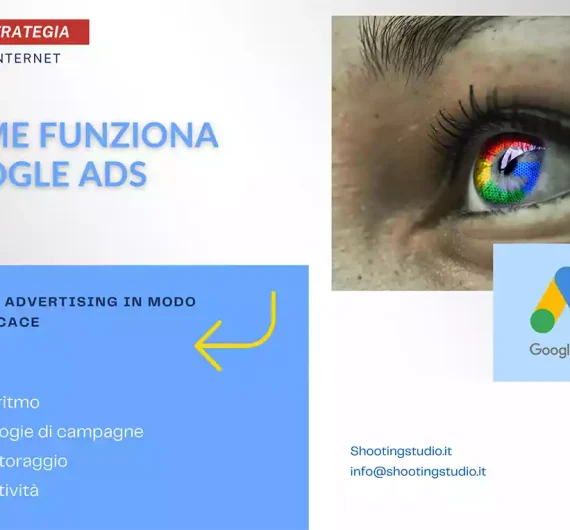Transforming occasional visitors into loyal customers with Google Ads Remarketing.
Introduction
Remarketing con Google Ads è una strategia di marketing digitale che consente di mostrare annunci pubblicitari personalizzati a utenti che hanno già visitato il tuo sito web. Questo ti permette di mantenere il contatto con i visitatori occasionali e trasformarli in clienti fedeli.
Benefits of Remarketing with Google Ads
Remarketing with Google Ads is a powerful tool that allows businesses to reach out to potential customers who have previously visited their website but did not make a purchase. By targeting these visitors with personalized ads, businesses can increase brand awareness, drive conversions, and ultimately turn these occasional visitors into loyal customers.
One of the key benefits of remarketing with Google Ads is the ability to target specific audiences based on their behavior on your website. By tracking the pages that visitors have viewed, the products they have shown interest in, and the actions they have taken, businesses can create highly targeted ads that are tailored to each individual’s preferences and interests. This level of personalization can significantly increase the chances of converting these visitors into customers.
Furthermore, remarketing with Google Ads allows businesses to stay top of mind with potential customers even after they have left their website. By displaying ads to these visitors as they browse other websites or social media platforms, businesses can remind them of the products or services they were interested in and encourage them to return to make a purchase. This constant exposure can help build brand recognition and trust, making it more likely that these visitors will eventually convert.
Another benefit of remarketing with Google Ads is the ability to track the effectiveness of your campaigns in real-time. By analyzing metrics such as click-through rates, conversion rates, and return on investment, businesses can quickly identify which ads are performing well and which ones need to be optimized. This data-driven approach allows businesses to make informed decisions about their remarketing strategies and continuously improve their results.
In addition, remarketing with Google Ads can help businesses increase their overall conversion rates and ROI. By targeting visitors who have already shown interest in their products or services, businesses can focus their advertising efforts on a highly qualified audience that is more likely to convert. This can lead to higher conversion rates, lower acquisition costs, and a higher return on investment compared to traditional advertising methods.
Furthermore, remarketing with Google Ads can help businesses improve their customer retention rates and increase customer lifetime value. By re-engaging with past visitors and encouraging them to make a purchase, businesses can turn one-time buyers into repeat customers who are more likely to make additional purchases in the future. This can help businesses build long-term relationships with their customers and increase their overall revenue over time.
Overall, remarketing with Google Ads is a valuable tool for businesses looking to transform occasional visitors into loyal customers. By targeting specific audiences, staying top of mind, tracking campaign performance, increasing conversion rates, and improving customer retention, businesses can leverage the power of remarketing to drive results and grow their business. If used effectively, remarketing with Google Ads can be a game-changer for businesses looking to maximize their online advertising efforts and achieve long-term success.
Strategies for Effective Remarketing Campaigns
Remarketing with Google Ads is a powerful tool that allows businesses to target users who have previously visited their website but did not make a purchase. By showing ads to these users as they browse other websites or use search engines, businesses can increase brand awareness, drive traffic back to their site, and ultimately convert these visitors into loyal customers.
One of the key benefits of remarketing with Google Ads is the ability to reach users who have already shown an interest in your products or services. By targeting these users with relevant ads, businesses can remind them of the value they offer and encourage them to return to complete a purchase. This can be especially effective for businesses with longer sales cycles or high-value products, as it allows them to stay top of mind with potential customers throughout their decision-making process.
In addition to targeting users who have visited your website, Google Ads also allows businesses to create custom audiences based on specific criteria, such as demographics, interests, or behaviors. This level of targeting enables businesses to tailor their ads to different segments of their audience, increasing the likelihood of engagement and conversion. For example, a clothing retailer could create separate remarketing campaigns for users who have viewed women’s clothing versus men’s clothing, allowing them to showcase relevant products to each group.
Another advantage of remarketing with Google Ads is the ability to track and measure the performance of your campaigns in real-time. By analyzing key metrics such as click-through rate, conversion rate, and return on ad spend, businesses can quickly identify what is working well and make adjustments to optimize their campaigns for better results. This data-driven approach allows businesses to make informed decisions about their remarketing strategy and allocate their budget more effectively to achieve their goals.
When creating remarketing campaigns with Google Ads, it is important to consider the user experience and ensure that your ads are relevant and engaging. This includes using compelling ad copy, high-quality images, and clear calls to action that encourage users to click through to your website. It is also important to test different ad formats and messaging to see what resonates best with your audience and drives the highest conversion rates.
In conclusion, remarketing with Google Ads is a valuable strategy for businesses looking to convert casual website visitors into loyal customers. By targeting users who have already shown an interest in your products or services, creating custom audiences based on specific criteria, and tracking and measuring the performance of your campaigns, businesses can increase brand awareness, drive traffic back to their site, and ultimately boost sales. By following best practices and continuously optimizing your campaigns, you can maximize the effectiveness of your remarketing efforts and achieve your business goals.
How to Measure Success in Remarketing with Google Ads
Remarketing with Google Ads is a powerful tool that allows businesses to target users who have previously visited their website but did not make a purchase. By showing ads to these users as they browse the web, businesses can increase brand awareness, drive conversions, and ultimately turn casual visitors into loyal customers.
One of the key metrics used to measure the success of a remarketing campaign is conversion rate. This metric measures the percentage of users who saw an ad and then took a desired action, such as making a purchase or signing up for a newsletter. A high conversion rate indicates that the ads are effectively persuading users to take action, while a low conversion rate may indicate that the ads are not resonating with the target audience.
Another important metric to consider is click-through rate (CTR). CTR measures the percentage of users who clicked on an ad after seeing it. A high CTR indicates that the ad is engaging and relevant to users, while a low CTR may suggest that the ad needs to be optimized or that the targeting needs to be adjusted.
Cost per acquisition (CPA) is also a crucial metric to track in remarketing campaigns. CPA measures the cost of acquiring a new customer through the campaign. By comparing the CPA to the lifetime value of a customer, businesses can determine whether the campaign is generating a positive return on investment.
In addition to these key metrics, businesses should also consider the overall return on investment (ROI) of their remarketing campaigns. ROI measures the profitability of the campaign by comparing the revenue generated to the cost of running the ads. A positive ROI indicates that the campaign is generating more revenue than it costs to run, while a negative ROI may suggest that adjustments need to be made to improve the campaign’s performance.
To optimize the success of a remarketing campaign with Google Ads, businesses should regularly monitor and analyze these key metrics. By tracking conversion rate, CTR, CPA, and ROI, businesses can identify areas for improvement and make data-driven decisions to optimize their campaigns.
One way to improve the performance of a remarketing campaign is to test different ad creatives and messaging. By running A/B tests, businesses can determine which ads resonate most with their target audience and drive the highest conversion rates. Testing different ad formats, calls to action, and messaging can help businesses identify the most effective strategies for engaging users and driving conversions.
Another strategy for optimizing remarketing campaigns is to refine targeting and segmentation. By segmenting users based on their behavior on the website, businesses can create more personalized and relevant ads that are more likely to resonate with users. By targeting users who have abandoned their shopping carts or visited specific product pages, businesses can tailor their ads to address the user’s specific needs and interests.
In conclusion, remarketing with Google Ads is a powerful tool for turning casual website visitors into loyal customers. By tracking key metrics such as conversion rate, CTR, CPA, and ROI, businesses can measure the success of their campaigns and make data-driven decisions to optimize performance. By testing different ad creatives, refining targeting and segmentation, and continuously monitoring and analyzing campaign performance, businesses can maximize the effectiveness of their remarketing campaigns and drive long-term success.
Conclusion
Remarketing con Google Ads è una strategia efficace per trasformare i visitatori occasionali in clienti fedeli. Utilizzando i dati di navigazione dei visitatori, è possibile mostrare loro annunci mirati che li spingono a tornare sul sito e completare un acquisto. Questo approccio aiuta a mantenere il marchio nella mente dei potenziali clienti e aumentare le probabilità di conversione. In conclusione, il remarketing con Google Ads è una tattica preziosa per aumentare le vendite e fidelizzare i clienti.




